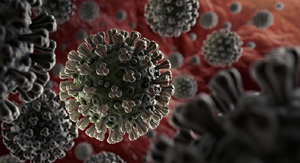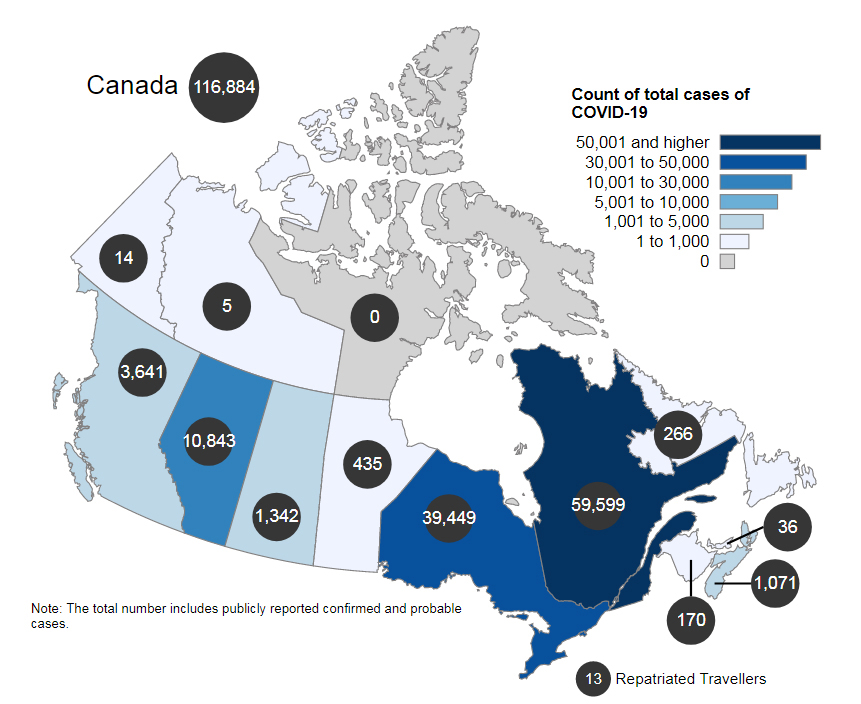
Sunday August 2, 2020 ~ GLOBAL | NATIONAL | BC
by Mary P Brooke, B.Sc., editor | West Shore Voice News
Let’s start with the current COVID-19 case counts and deaths at August 2, 2020:
- Global (WHO): 17,660,523 cases (262,929 new in the last 24 hours), and 680,894 deaths (5,851 new in 24 hours)
- USA (WHO): 4,523,888 cases (67,499 new) and 152,630 deaths (1,365 new)
- Canada (Public Health Agency of Canada): 116,884 cases and 8,945 deaths.
- British Columbia (BC CDC / July 31): 3,641 cases (50 new) and 195 deaths (1 new)

Six-month perspective:
A lot has transpired in the six months of recognized COVID-19 pandemic around the world.
While it seemed odd in the beginning to hear that a disease would affect only certain ages (mainly the elderly), now public health is saying that COVID-19 “is not only a disease that affects the elderly but that young people must take the same precautions to protect themselves and protect others as everyone else”, as stated by the World Health Organization’s (WHO) Director General Dr Tedros in a six-month summary report today (WHO COVID-19 Preparedness and Response Progress Report – 1 February to 30 June 2020).

In BC, the same messaging trend was prevalent … pleading with youth and middle-age adults to take actions to protect “seniors and elders”, but now all ages are advised to take precautions.
Now that people are circulating in the community, COVID-19 is being caught by anyone of any age — in BC Centre for Disease Control July 31 stats 38% of new cases were in persons at 20 to 29 years.
Public health messaging:
Public health around the world was looking at who was first impacted, but not clearly enough at how the virus itself worked to cause infection — which upon realistic examination would have early-on revealed that COVID-19 can affect anyone. It infects cells, using human cells as hosts for their own reproduction. We all have cells. Some of us are healthier than others and can fight the infection; there may even be benefits among certain blood types as to how infection is responded to.
Spread of the virus was at first thought only to occur by way of being carried moist droplets from human breath. Now it’s being stated that anyone can catch it, and even that asymptomatic persons can be spreaders. What seems to be consistently accurate is that close contact in confined spaces is a more conducive to the virus spreading in breath between people. Hence the messaging about ‘outdoors is better than indoors’ … there is simply more air circulation.
Preparing for the second wave, and beyond:
With cooler weather coming in fall and winter, people will head back indoors, where conditions will be more favourable to viral spread. The now widely expected ‘second wave’ of infection is therefore soon upon us as we approach September — the beginning of the traditional annual flu season where respiratory infections are known to spread.
Blanket ‘truths’ were stated early on, which felt fragile to common sense: “It is spread more by adults to children than children to adults,” was the mantra heard in BC in the early weeks and months of the COVID-19 pandemic. Now we’re told that children are among the asymptomatic in many cases; the spread from any person of any age is possible — we may only see symptoms differentially.
Good health is the best protection:
Essentially we are all now living in a world teeming with the COVID-19 virus. Until there is a vaccine, those who are in the best state of health (with a strong immune system) will survive it best, that’s just common sense. That’s the corollary of the warnings from the early days of the pandemic which declared that people who are immuno-compromised are also (like the seniors and elderly) at greatest risk.
The situation begs a definition of optimal health status more than whether one is ‘senior and elderly’. Many people in their sixties are in excellent health, more than some younger people who have damaged their health with alcohol, drugs, smoking, poor nutrition choices, and other deleterious lifestyle choices.

Loading the leadership load onto young adults:
After what could be perceived as prioritizing seniors and elderly over youth and young adults in COVID-19 public health messaging earlier this year, now public health leaders want youth to step up and lead the fight. “They can be leaders – they should be leaders and drivers of change,” said Dr Tedros in his August 2 statement.
“In most of the world the virus is not under control – it is thriving on delay, denial and division,” said Dr Tedros. That deadly 3-D combo (delay, denial, division) falls squarely on existing structures of government, the very systems that have — for the most part — left youth out in the cold.
Individual decisions:
This battle has been led with good intention and loads of data by well-intentioned public health and government leaders in most parts of the world. But as is sadly the case when it comes to everyday people affected by war… “it’s every man for himself” as the saying goes.
Families are on the front line in this regard, in terms of making decisions about whether to send their children back to school in September. But each one of us needs to make decisions with regard to the safety, survival and long-term health goals for ourselves and our families, hopefully with the support of local communities. Cumulatively, this will support the long-term success of the global goals for good health, economic well-being, and holding civilized society together toward a better future for individuals, communities and the planet itself.
Public education is part of the solution:
Underpinning individual decisions is education. In BC we have so far had a better result than most jurisdictions because of the generally high level of education in the population combined with a propensity in the west coast region for seeking a healthy lifestyle. Public education has never been so obviously essential (followed closely by the obvious need for child care, if women are to remain with heads above water in a challenged economy).
Canada-US Border:
The COVID-19 infection rate in the USA is high and evidently out of control.
At present, the mutual Canada-USA agreement of keeping the border closed to essential travel only (such as for helping to maintain the food supply chain) is in place to August 21, 2020. The word in political circles is that the goal (for Canada at least) is to keep the border closed until at least year-end.

Until there is a vaccine:

While in just the past week or so there have been news reports about one or two treatments (not cures) for COVID-19, and word of getting close to a vaccine (some now in clinical trials), essentially there is still zero protection for humans of all ages against COVID-19.
The illness itself would be bad enough, but there are concomitant impacts such as inability to work and the possibility of infecting family and household members.
When there is a vaccine:
Even once the presumed vaccine is found, manufactured and distributed, it will not be administered to everyone all at once. Frontline emergency and health care workers and government leaders will probably receive the vaccine first, followed by sectors designated as essential.
Unlike in the regular flu season where seniors and children are given the vaccine most freely, a premium supply of COVID-19 vaccine may not reach seniors and children as readily as the working adult population that will be needed to keep the economy going.



